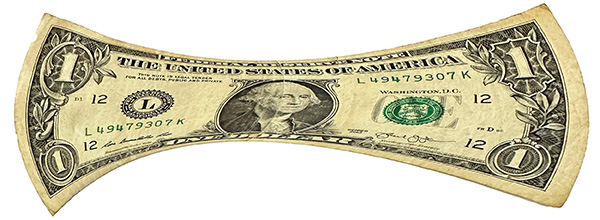| g e n u i n e i d e a s | ||||||
 |
 |
 |
 |
 |
 |
 |
| home | art and science |
writings | biography | food | inventions | search |
| FED UP |
| Nov 2022 |
We should concentrate on SUPPLY over DEMAND
We are not facing equilibrium price inflation. Instead, we are dealing with runaway inflation where there is a kind of "open-loop” behavior at work. In this case, supplies lag demand, prices rise in response AND in tandem the ability to pay increases, allowing demand to grow and prices to spiral out of control. Like feedback in an audio amplifier. In our current inflationary spiral, supply constraints can be traced back to the societal disruptions of Covid, Ukraine affecting the price of oil, uncertainty over the prospect of an expanded war and the lack of political cohesion. But in tandem demand is spiraling upward because long over-due wage pressure is finally gaining traction with employers, while deferred consumer discretionary spending remains strong. For this reason, the FED’s continued intervention is irrelevant (like the Big Bang Theory’s famous observation that The Last Crusade's outcome did not depend on Indiana Jones). Perversely, by raising the cost of doing business by raising interest rates, the FED simply tosses fuel on the cost fire, raising prices even higher. In fact, by hiking long-term interest rates, the FED discourages exactly those long-term capital investments which would eventually expand supply. Possibly slowing recovery. There is some evidence that inflation is lower in countries which only slowly exited from Covid and the economy did not overheat. Declaring covid as “over” was a red flag in front of a bull. Most likely, these factors will burn out on their own. However, the urge to do SOMETHING is a political imperative. The FED hopes to knock the economy out of its inflationary price spiral by raising prices faster than wages can adapt by brutally increasing borrowing costs. Lowering the gain on the feedback loop. Diminishing expectations. Damaging the lives of the poor who lacked discretionary income in the first place. But doing nothing to help increase “supply”. Pining for the FED to return us to the “good ol’ days” of 2019 means higher unemployment and lower wages and more income disparity. If the government was realistic about inflation rates and stopped using the blunt instrument of the FED to do its dirty work and started to actually help manage the economy, we could recover faster and more robustly. Reliance on the FED is politically expedient and merely shifts bad news away from Capitol Hill. But the FED’s sole tool of adjusting interest rates creates more damage than good and tends to favor businesses over employees. We need to adopt a broad-based action plan to have any hope of a safe landing. If that interpretation is correct, then Congress and the President must act. Possible initiatives include:
These initiatives could break the inflationary cycle, perhaps generating additional tax revenue and setting the stage for greater productivity. More importantly, instead of 1-2% inflation as the nominal FED expectation, we might reset at a 3-4% rate, which would help grease the economy (see link for details on how moderate inflation provides room for innovation). We will only return to “normalcy” when supply finally catches up with demand. |
Contact Greg Blonder by email here - Modified Genuine Ideas, LLC. |
